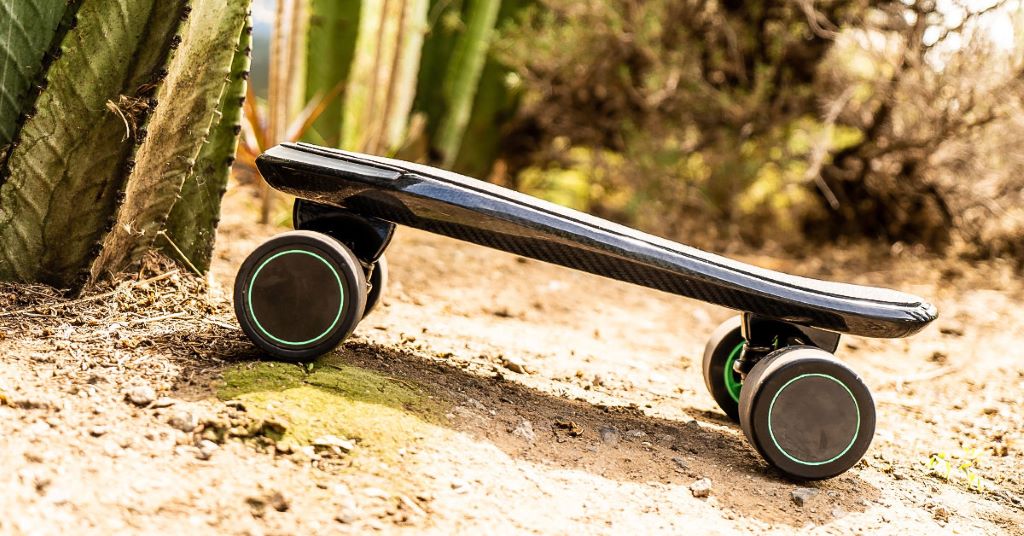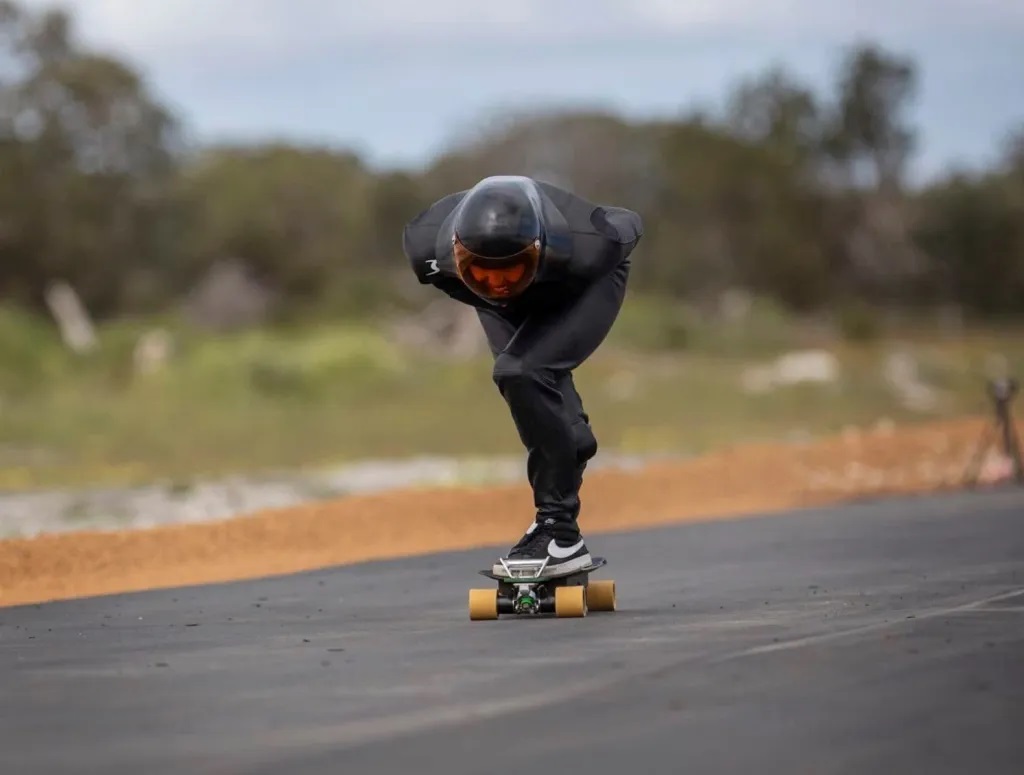Are you an adrenaline junkie looking to add some thrill to your electric skateboard adventures? Or maybe you’re just curious about the capabilities of these sleek, motorized boards. Well, you’ve come to the right place! Today, we’re going to dive into the exhilarating world of electric skateboarding, specifically exploring whether electric skateboards can handle the downhill slopes.
The Buzz About Electric Skateboards
Electric skateboards have taken the world by storm in recent years, providing a fun and eco-friendly mode of transportation. They’re like the cool, futuristic cousins of traditional skateboards, equipped with electric motors, rechargeable batteries, and handheld remote controls. These nifty devices have opened up a world of possibilities for riders of all ages.
But here’s the burning question: can electric skateboards navigate those thrilling, heart-pounding downhill slopes that skateboarders love so much? Let’s find out.
The Anatomy of an Electric Skateboard
Before we dive into downhill adventures, let’s take a quick look at what makes up an electric skateboard. Most electric skateboards have a similar basic structure:
- Deck: This is the flat, often concave board where you place your feet. It’s the part you stand on and provides stability and control. Discover how much does a skate deck weigh.
- Wheels: Electric skateboards come with a set of four wheels, typically made of polyurethane, which ensures a smooth ride.
- Trucks: These are the metal components that hold the wheels in place and allow the board to pivot for turns. They play a crucial role in the skateboard’s maneuverability.
- Electric Motor: The heart of the electric skateboard, the motor, is usually located near the rear wheels. It’s responsible for propelling the board forward.
- Battery: The power source of the electric skateboard. The battery is what keeps that motor humming and your board moving.
- Remote Control: Most electric skateboards come with a handheld remote control that allows you to accelerate, brake, and control your speed.
Now that you’re acquainted with the basics, let’s tackle the downhill challenge!
Electric Skateboards and the Downhill Descent
Imagine yourself perched atop a hill with your electric skateboard, ready to descend. You may be feeling a mix of excitement and trepidation. Will your electric skateboard be up to the task? Let’s break it down step by step.
1. Speed and Power
Electric skateboards are designed to provide a boost of speed, and this comes in handy when you’re tackling a downhill slope. The electric motor can provide significant torque and power, allowing you to cruise downhill at impressive speeds.
But remember, with great power comes great responsibility. It’s crucial to exercise caution and always adhere to the speed limits of your skateboard. Many electric skateboards have speed settings, so you can choose a mode that suits your comfort level.
2. Braking on the Descent
One of the most crucial aspects of tackling downhill slopes on an electric skateboard is braking. You need a reliable braking system to ensure your safety and control during the descent.
Most electric skateboards are equipped with regenerative braking systems. When you engage the brakes, the motor switches to a generator mode, converting some of the kinetic energy back into electrical energy to recharge the battery. This feature not only makes braking smoother but also extends your ride’s battery life.
However, regenerative braking has its limitations. It may not be as effective at very high speeds or on extremely steep descents. In such cases, you should rely on the skateboard’s mechanical brakes, if available, or foot-braking techniques to supplement the regenerative braking.
3. Handling Turns and Maneuvering
Electric skateboards are more than just speed demons; they can handle turns and maneuvers with finesse. The trucks on electric skateboards are designed to pivot, allowing for smooth and controlled turns, even on downhill slopes.
When going downhill, remember to distribute your weight evenly and lean into turns. This will help you maintain balance and control, making your downhill ride a thrilling yet safe experience.
4. Uphill and Downhill Grade
The grade of the hill you’re planning to conquer matters. Most electric skateboards can comfortably handle moderate downhill slopes with ease. However, it’s essential to check the specifications of your specific skateboard, as not all boards are created equal.
For steeper downhill descents, you might want to consider a skateboard with a more powerful motor and a lower center of gravity for added stability. Additionally, larger wheels can provide better traction and control when tackling steep hills.
5. Safety First
No matter how confident you are in your electric skateboard’s downhill capabilities, safety should always be your top priority. Here are some safety tips to keep in mind:
- Wear appropriate safety gear, including a helmet, knee pads, elbow pads, and gloves.
- Inspect your skateboard regularly for any signs of wear and tear.
- Choose your downhill routes carefully and be aware of potential hazards like gravel, potholes, and traffic.
- Start with gentle slopes and gradually work your way up to steeper descents as you gain experience and confidence.
- Always obey traffic rules and local regulations.
Now that we’ve explored the ins and outs of electric skateboards on downhill slopes, let’s address some common questions that riders often have.
FAQs
- Can any electric skateboard handle downhill slopes?
Not all electric skateboards are created equal. While most electric skateboards can handle moderate downhill slopes, the extent to which they can handle steeper descents varies. Check the specifications of your skateboard and consider upgrading to a model with a more powerful motor and better stability if you plan to tackle steep hills regularly.
- How fast can electric skateboards go downhill?
The downhill speed of an electric skateboard depends on various factors, including the power of the motor, the weight of the rider, and the steepness of the slope. Some electric skateboards can reach speeds of 20-30 miles per hour or more on steep downhill descents. Always check the manufacturer’s recommendations for your specific skateboard.
- Are electric skateboards safe for downhill riding?
Electric skateboards can be safe for downhill riding when used responsibly and with the appropriate safety gear. It’s crucial to wear protective equipment like helmets, knee pads, and gloves. Additionally, riders should be familiar with their skateboard’s braking system and practice safe braking techniques.
- Can electric skateboards go uphill as well?
Yes, electric skateboards can go uphill, but the ability to climb hills depends on the power of the motor and the steepness of the incline. Many electric skateboards are equipped with motors that can handle moderate uphill slopes, while others are specifically designed for off-road and uphill terrain.
- How long do electric skateboard batteries last when going downhill?
The battery life of an electric skateboard when going downhill depends on factors like the rider’s weight, speed, and the steepness of the slope. When riding downhill, the regenerative braking system can help extend the battery life by converting some of the kinetic energy back into electricity. However, expect the battery to drain faster when riding downhill at high speeds.
In conclusion
Electric skateboards are not just for cruising on flat terrain; they can handle the thrill of downhill slopes with the right precautions and proper technique. Basic cycling knowledge you need: As with any extreme sport, it’s crucial to prioritize safety and gradually build your skills and confidence, whether you’re on a bike or an electric skateboard, so gear up, find a suitable hill, and let your wheels take you on an exhilarating downhill adventure!

